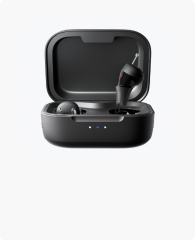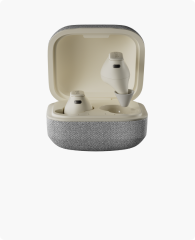Sudden sensorineural hearing loss (SSNHL) is an often misunderstood and underdiagnosed condition that requires prompt action. This blog delves into the causes, symptoms, treatment options, and long-term solutions to manage SSNHL effectively. Whether you're dealing with this condition or looking to understand it better, we'll cover everything you need to know to protect your hearing health.
🚀 Navigate This Post
- ➤ Part 1: What Is Sudden Sensorineural Hearing Loss (SSNHL)?
- ➤ Part 2: Sudden Sensorineural Hearing Loss Symptoms
- ➤ Part 3: What Causes Sudden Sensorineural Hearing Loss?
- ➤ Part 4: Effective Treatment Options for Sudden Sensorineural Hearing Loss
- ➤ Part 5: Is Sudden Sensorineural Hearing Loss Permanent?
- ➤ Part 6: Emotional and Psychological Impact of SSNHL
- ➤ Part 7: Prevention and Protecting Your Hearing Health
You may also be interested in:
- Understanding Unilateral Hearing Loss: Symptoms, Causes, and Treatments
- Understanding Sudden Sensorineural Hearing Loss (SSNHL) and How to Address It
- Early Warning Signs of Hearing Loss You Might Be Ignoring!
Part 1: What Is Sudden Sensorineural Hearing Loss (SSNHL)?
1. Definition and Distinction
Sudden sensorineural hearing loss (SSNHL) is a rapid, unexplained drop in hearing, typically in one ear. It's a type of sensorineural hearing loss caused by issues in the inner ear or auditory nerve, differing from conductive hearing loss, which results from blockages like fluid or earwax.
2. How Does It Happen?
SSNHL usually develops within 72 hours. Many people confuse it with ear infections or minor blockages, which can delay treatment and increase the risk of permanent damage.
Part 2: Sudden Sensorineural Hearing Loss Symptoms
SSNHL symptoms may resemble mild ear issues, making them easy to miss. Early recognition is critical for treatment success.

1. Warning Signs
Common SSNHL symptoms include:
- Sudden hearing loss, often in one ear
- Tinnitus (ringing or buzzing sounds)
- Dizziness or balance problems
- Fullness or pressure in the ear
2. Why You Should Act Fast
Early treatment greatly improves sudden sensorineural hearing loss recovery rate, especially within the first two weeks.
Part 3: What Causes Sudden Sensorineural Hearing Loss?
The causes of SSNHL vary, and in many cases, they're still unknown. However, some common triggers include:
1. Known Causes
- Viral Infections: Viruses like measles or mumps can damage the auditory nerve.
- Autoimmune Disorders: Conditions like lupus may attack hearing structures.
- Ototoxic Medications: Certain drugs, such as chemotherapy agents, may harm the inner ear.
2. The Challenge of Idiopathic Cases
Up to 90% of SSNHL cases are idiopathic—meaning their exact cause is unknown. That's why immediate treatment is key.
Part 4: Effective Treatment Options for Sudden Sensorineural Hearing Loss
Timely treatment is crucial when dealing with sudden sensorineural hearing loss (SSNHL). The sooner you seek medical attention, the better the chances of recovery. While some cases resolve spontaneously, most require targeted intervention to restore or improve hearing. Let's explore the most effective treatment methods available today.
1. The Role of Corticosteroids
The cornerstone of sudden sensorineural hearing loss treatment is corticosteroid therapy. These medications reduce inflammation and swelling in the inner ear, improving hearing recovery rates.
- Oral Corticosteroids: Typically the first line of treatment.
- Intratympanic Injections: For patients unable to tolerate oral steroids, direct injections into the eardrum offer an effective alternative.
2. Leveraging Technology for Hearing Support
When hearing loss persists despite medical treatment, advanced solutions like hearing aids become invaluable. Cearvol hearing aids are designed to enhance sound clarity and reduce background noise, empowering users to regain confidence in their daily interactions.
Part 5: Is Sudden Sensorineural Hearing Loss Permanent?
The permanence of sudden sensorineural hearing loss (SSNHL) largely depends on the timing and type of intervention. While some patients experience full recovery, others may face lasting effects. Understanding the recovery process and long-term management strategies can help those affected navigate this challenging condition.
1. The Recovery Timeline
Recovery from SSNHL varies depending on how quickly treatment begins. Patients receiving care within the first 10 days have a much higher chance of regaining their hearing. However, delayed treatment could result in irreversible damage.
2. Managing Long-Term Outcomes
In cases where SSNHL leads to permanent hearing impairment, modern hearing aids provide a lifeline. Devices tailored for advanced sound processing and comfort, like those highlighted in our sensorineural hearing loss guide, can significantly improve the quality of life for affected individuals.

Part 6: Emotional and Psychological Impact of SSNHL
Sudden sensorineural hearing loss (SSNHL) is not only a physical health issue but also a significant emotional challenge. The abrupt nature of the condition often leaves individuals grappling with fear, frustration, and uncertainty. Addressing these emotional aspects is as important as seeking medical treatment.
1. Dealing with the Emotional Toll
SSNHL is not just a physical condition—it can take a toll on mental health as well. Individuals often feel isolated or frustrated due to sudden changes in their ability to communicate effectively.
2. Building a Support System
Connecting with hearing loss communities or consulting with specialists can provide emotional relief and practical advice. Encouragingly, the availability of effective treatments and hearing aids makes it easier for individuals to adapt and maintain their quality of life.

Diamond X1 - Best Hearing Aids with Bluetooth
Newcomer Price
$249.99 $309.99
- ✔ Adaptive sound modes for clear hearing.
- ✔ Bluetooth for calls & streaming.
- ✔ App-controlled, customizable adjustments.
- ✔ Rechargeable & fast charging.
- ✔ Ideal for mild to moderate hearing loss.
Part 7: Prevention and Protecting Your Hearing Health
1. Preventive Strategies
Although SSNHL cannot always be predicted, certain measures can reduce your risk:
- Noise Protection: Use earplugs in loud environments.
- Healthy Lifestyle: Manage underlying conditions like diabetes or hypertension.
- Regular Checkups: Visit an audiologist annually, especially if you have a family history of hearing loss.
2. Adopting Advanced Hearing Solutions
For individuals who already experience hearing challenges, solutions like Cearvol hearing aids offer exceptional sound clarity, noise reduction, and long battery life, ensuring that users can enjoy every moment with confidence.
Conclusion: Protect Your Hearing and Act Quickly
Sudden sensorineural hearing loss is a medical emergency that requires immediate action. By understanding what is sudden sensorineural hearing loss, its symptoms, causes, and treatments, you can take proactive steps to protect your hearing health. Modern technology, such as advanced hearing aids, ensures that even in cases of permanent hearing loss, individuals can lead fulfilling lives.
Take the first step today by exploring solutions tailored to your needs.







![[2025 Updated] The Ultimate Christmas Gift Idea for Every Loved One](http://cearvol.com/cdn/shop/articles/christmas_gift_idea_main_51979b59-7a71-414d-8163-9a64be473aa6.jpg?v=1753083757&width=3271)
Leave a comment
All comments are moderated before being published.
This site is protected by hCaptcha and the hCaptcha Privacy Policy and Terms of Service apply.